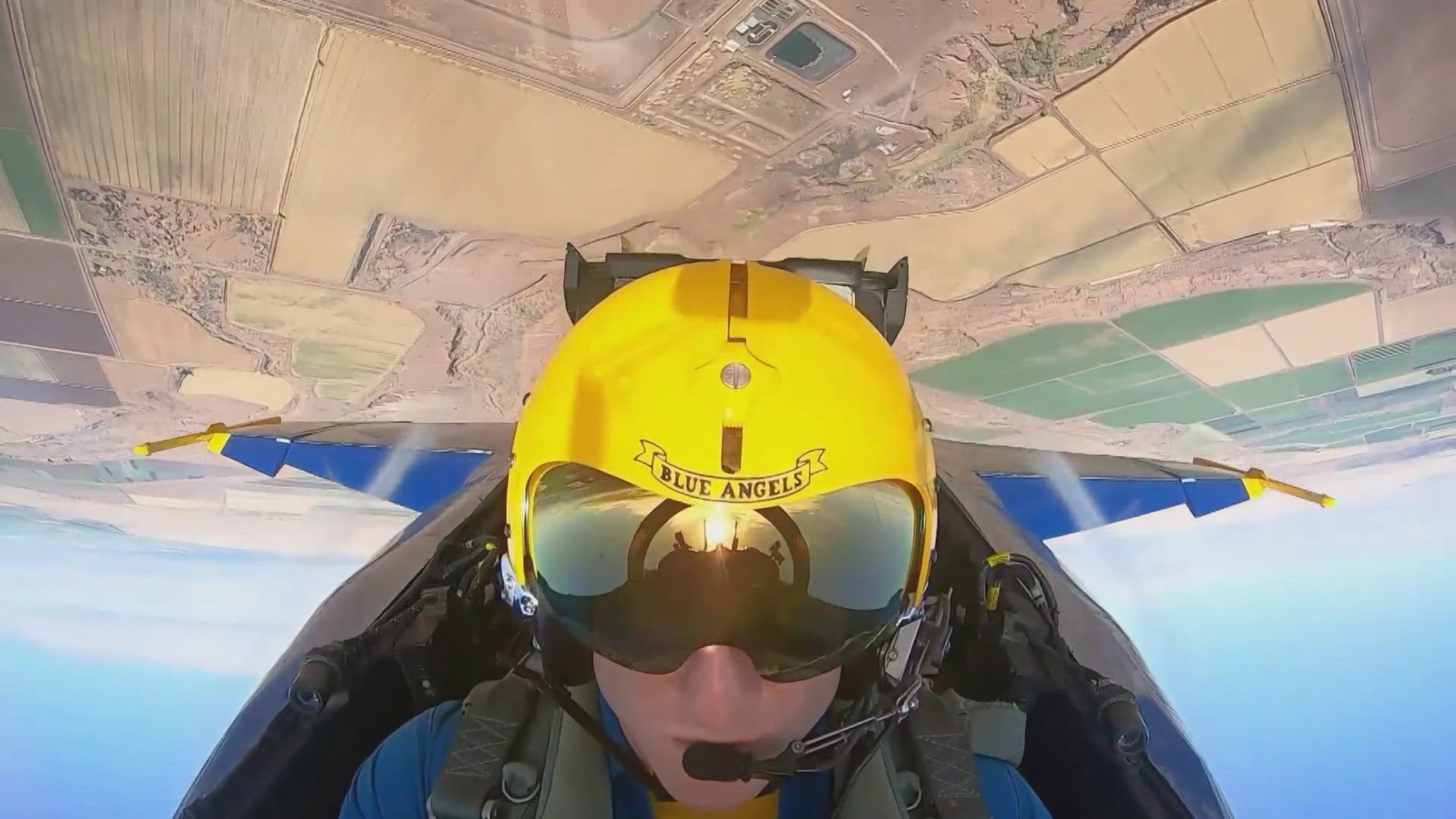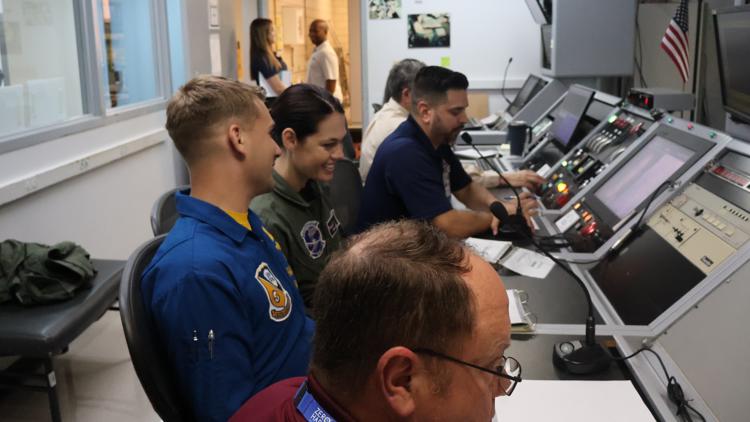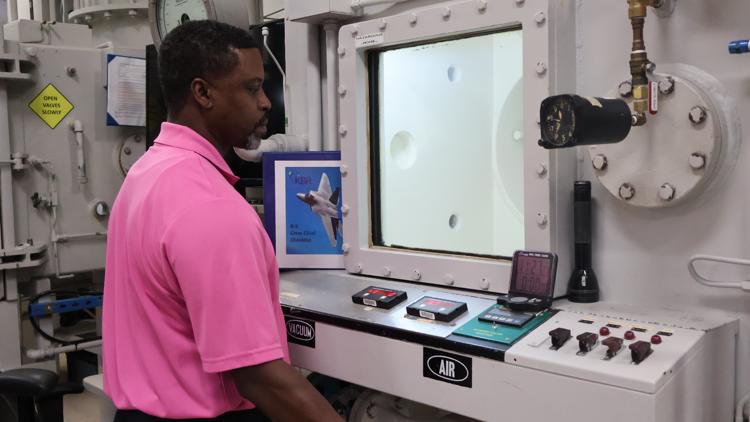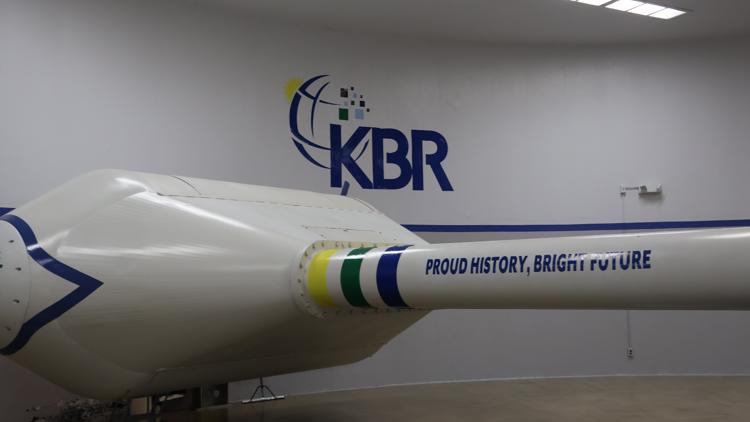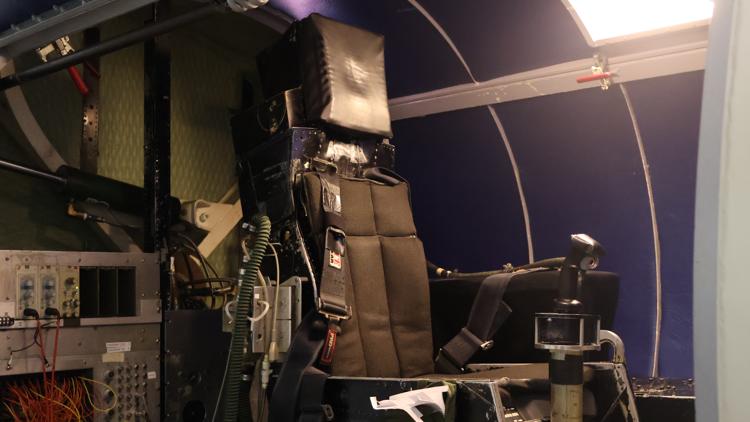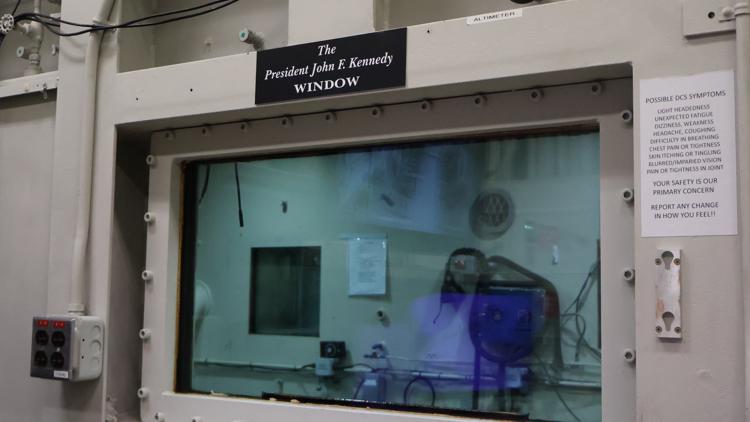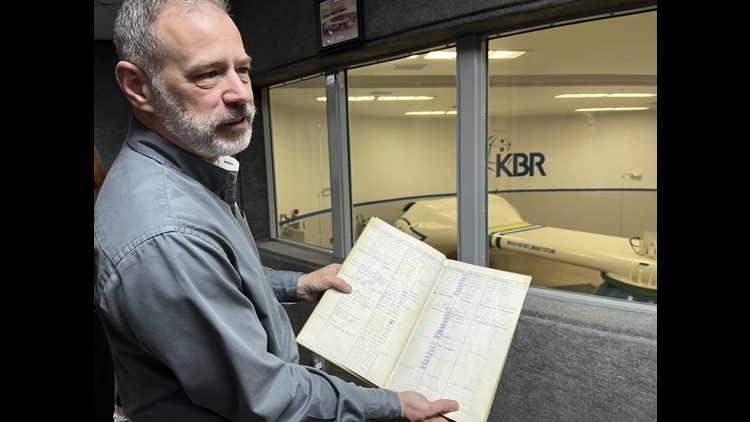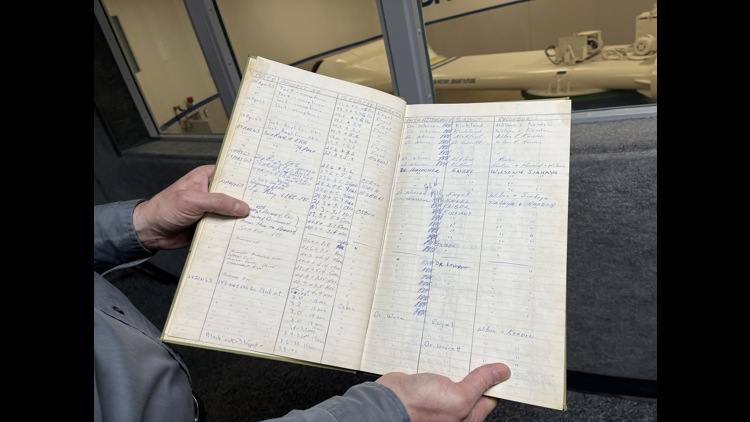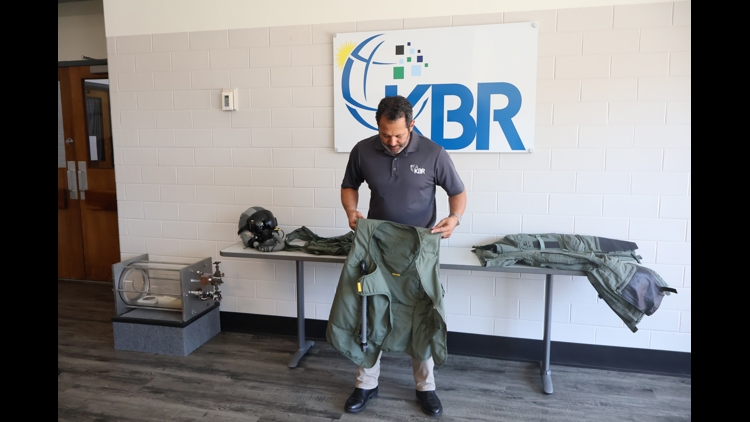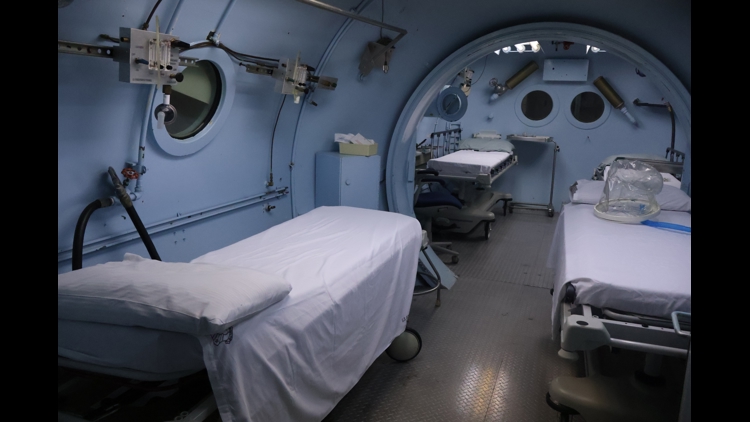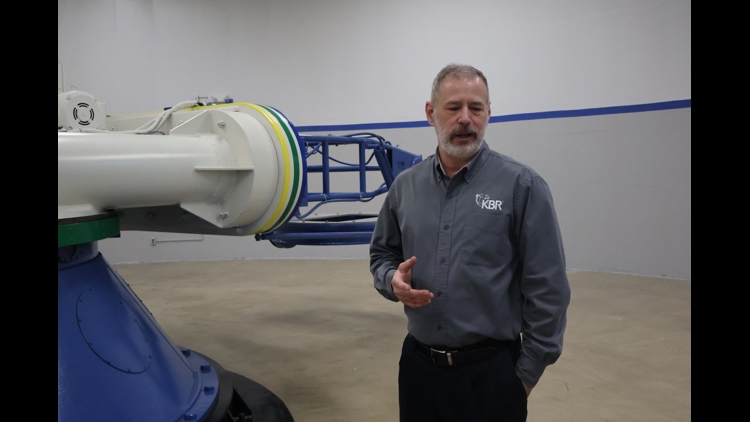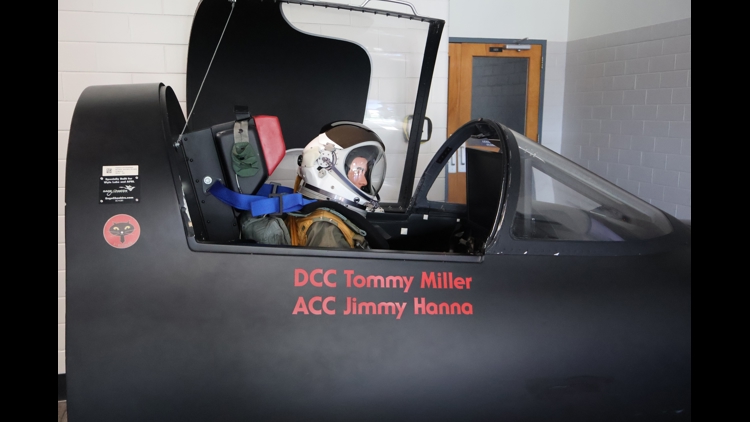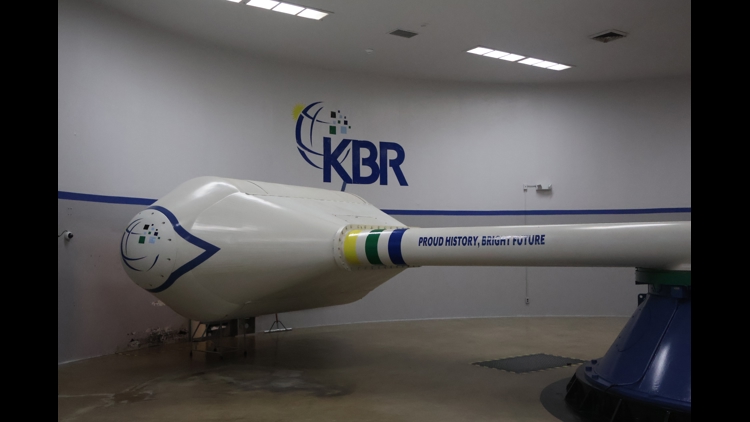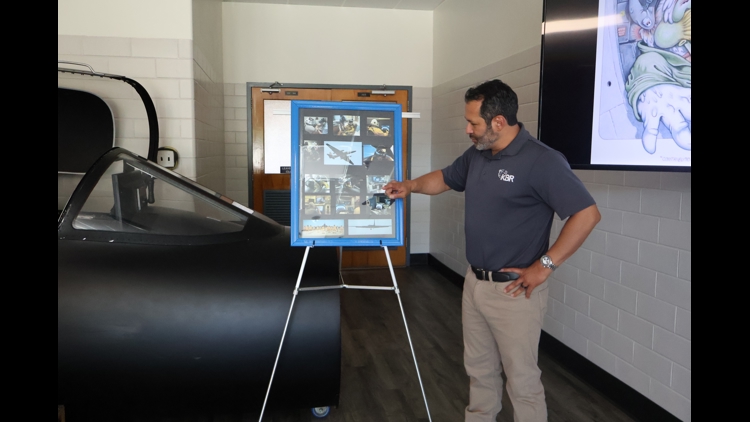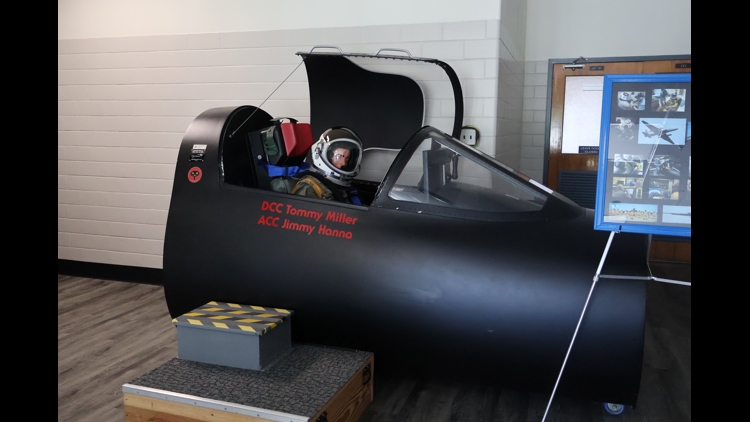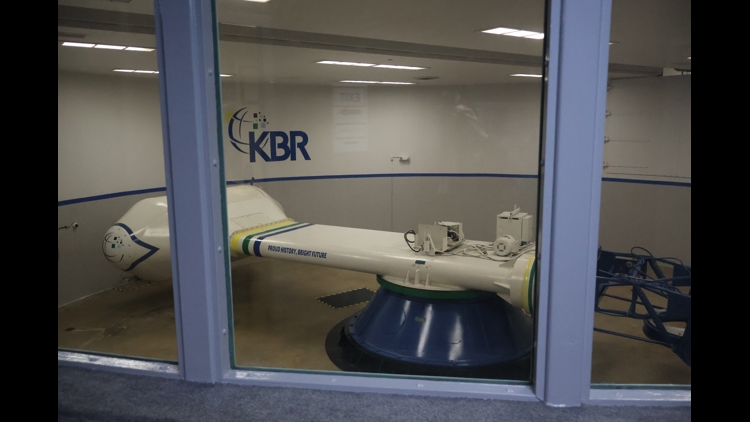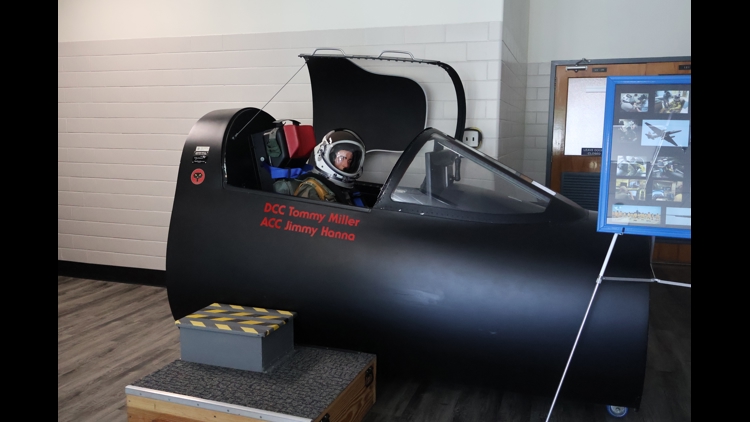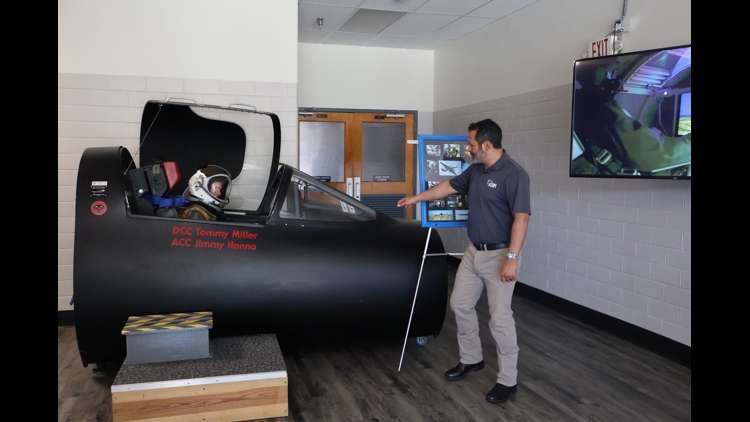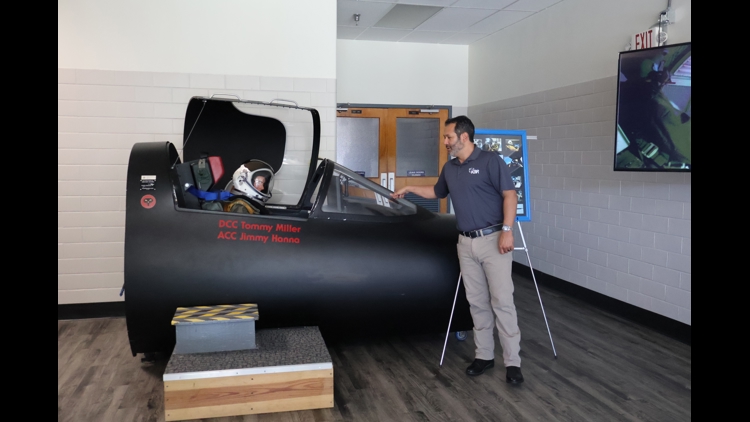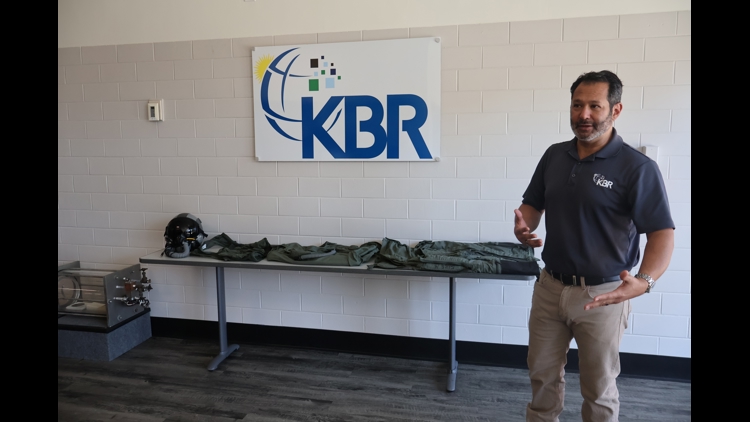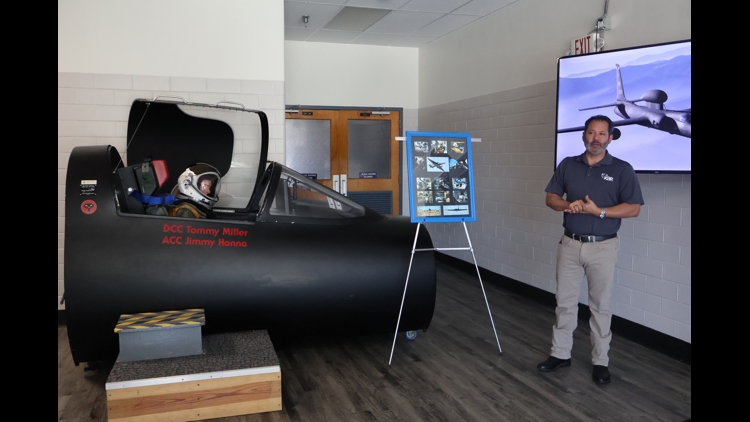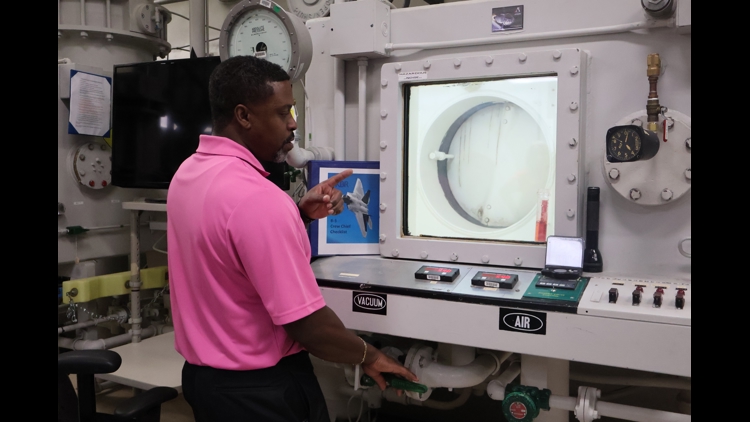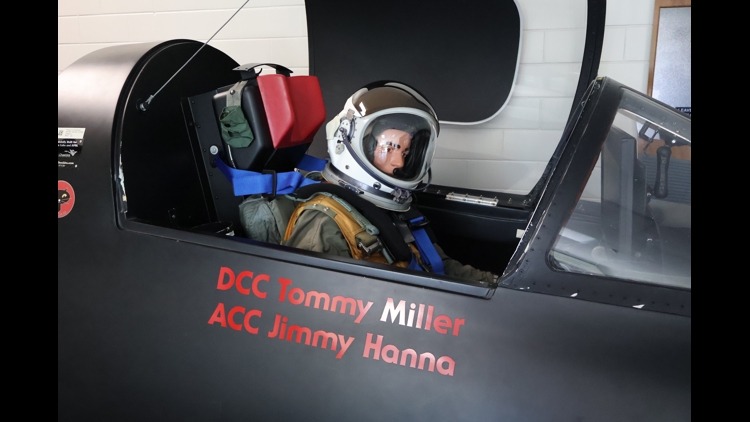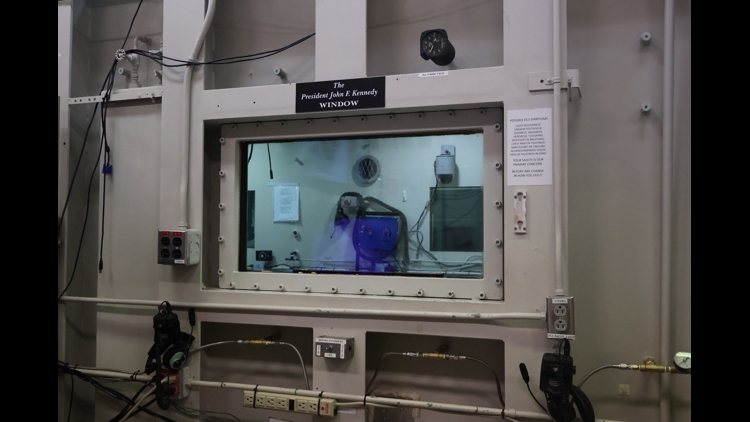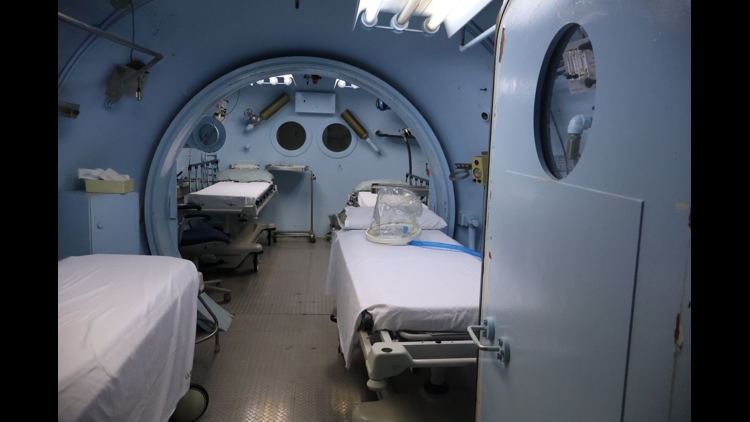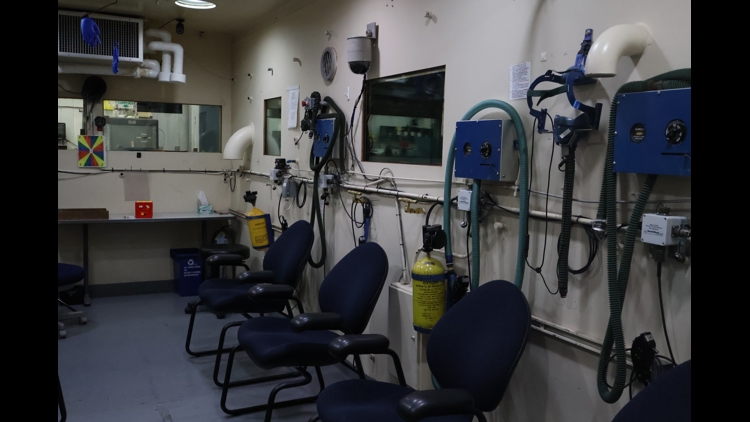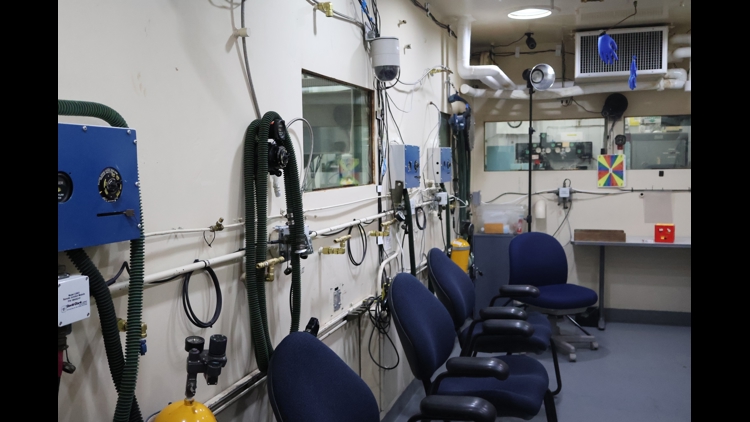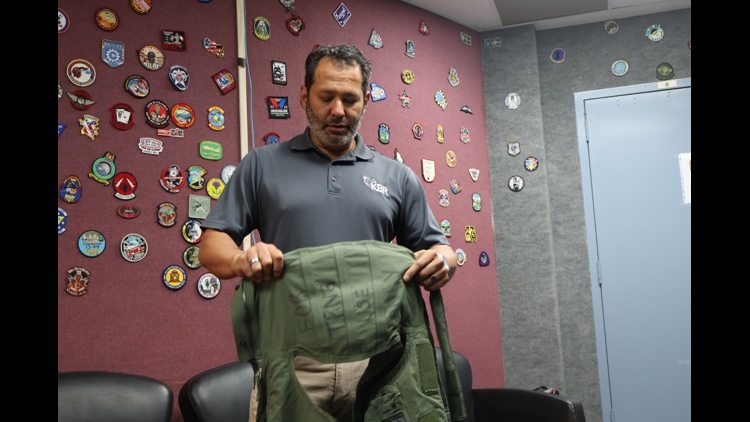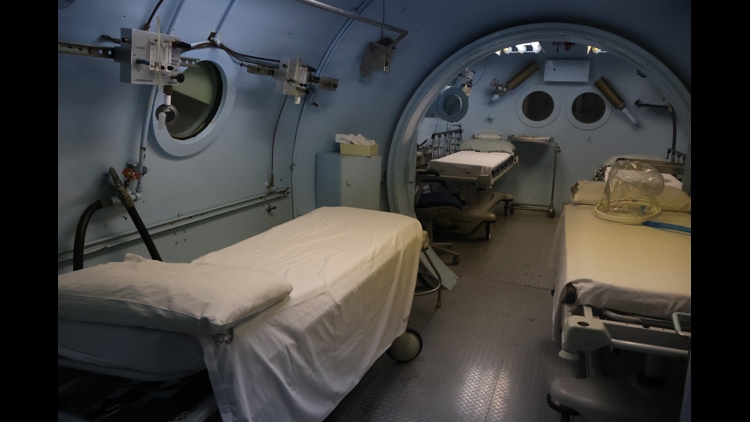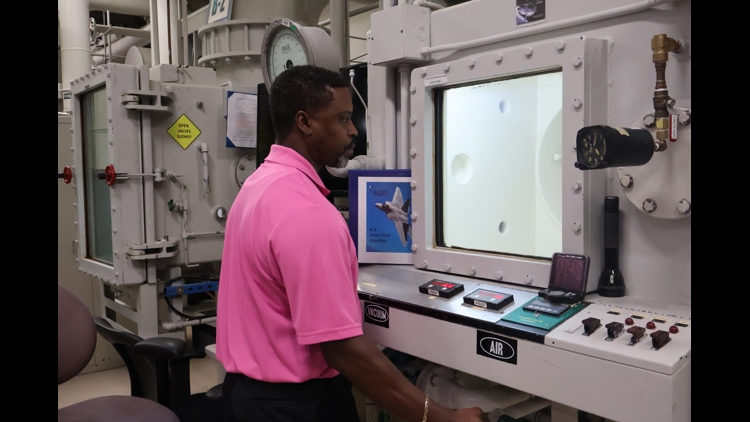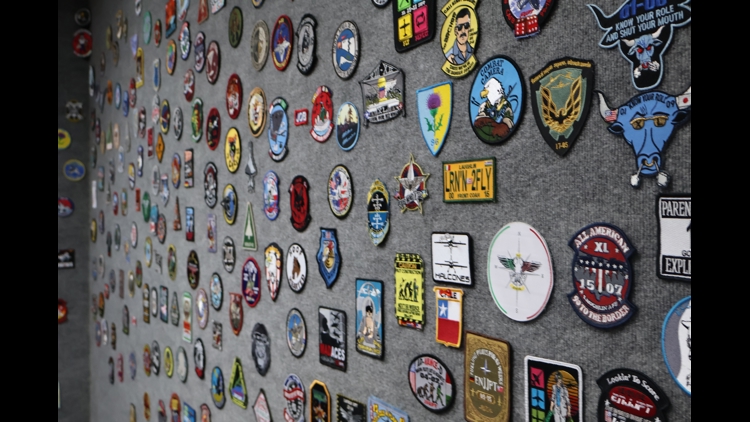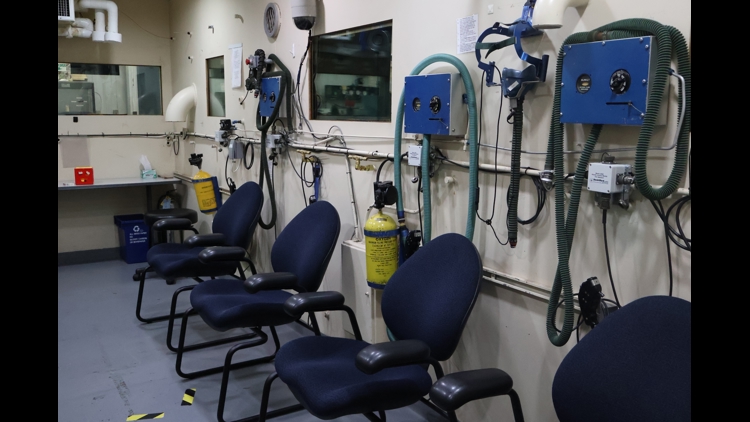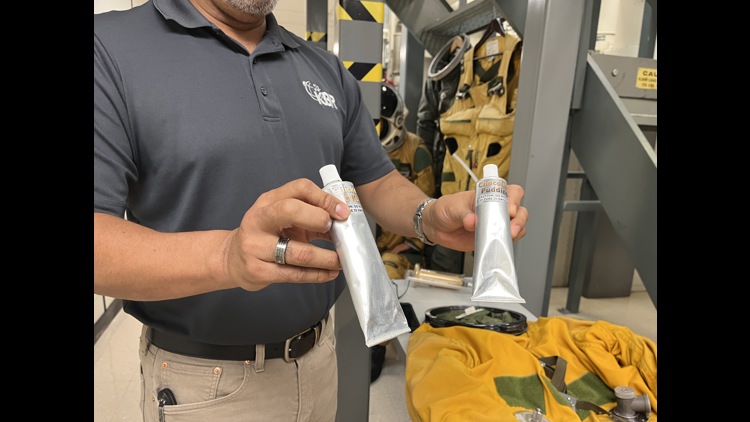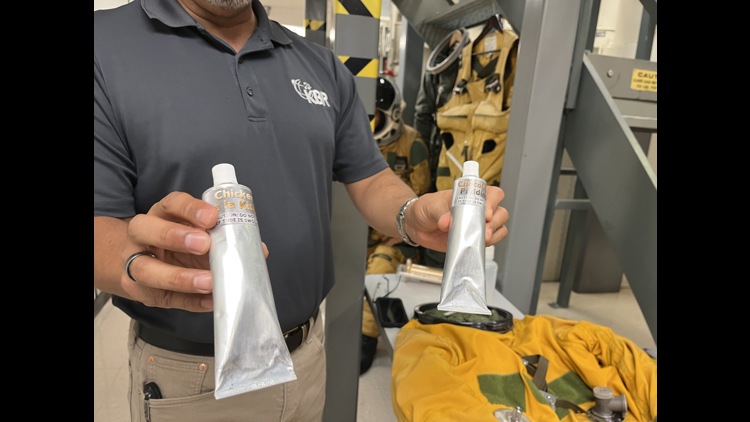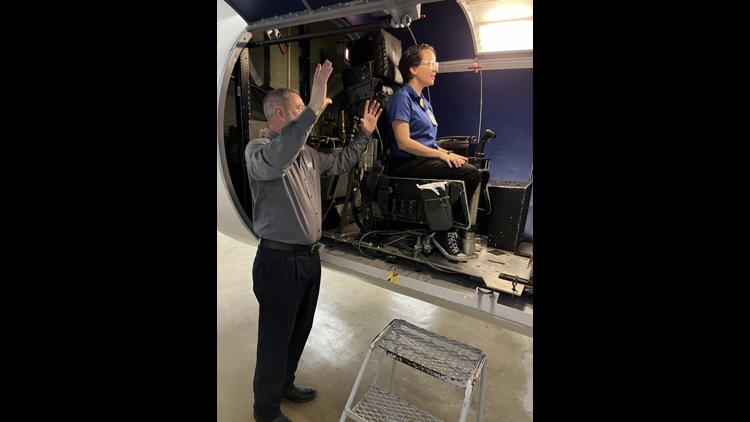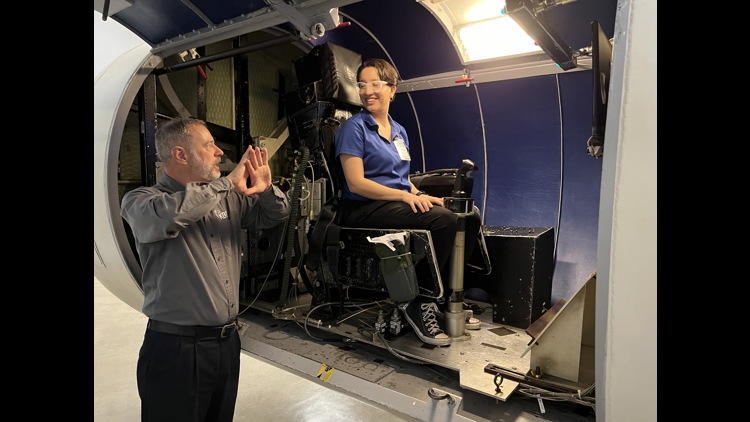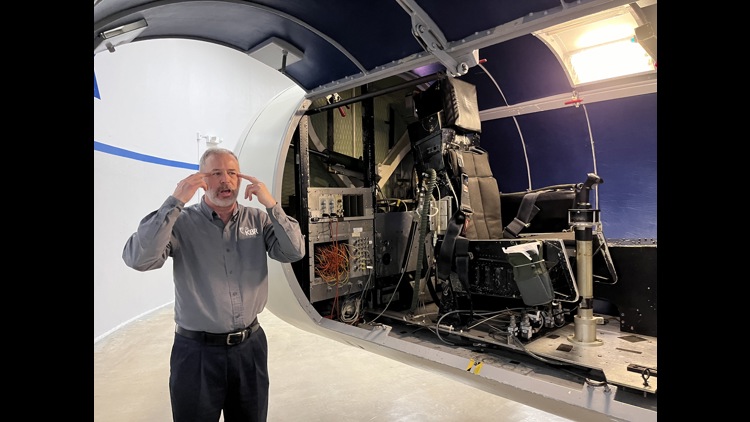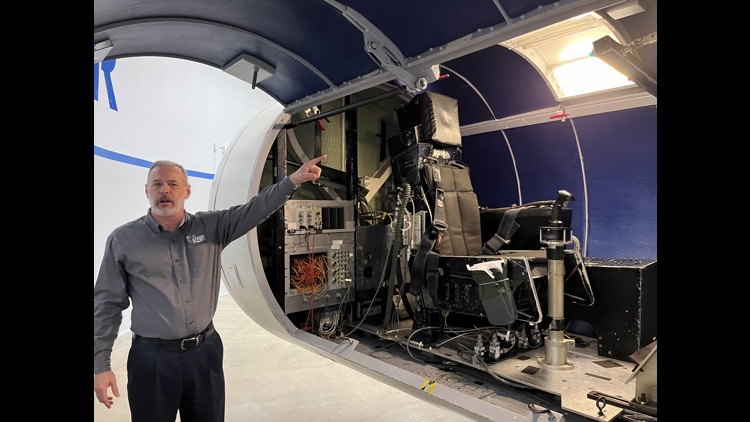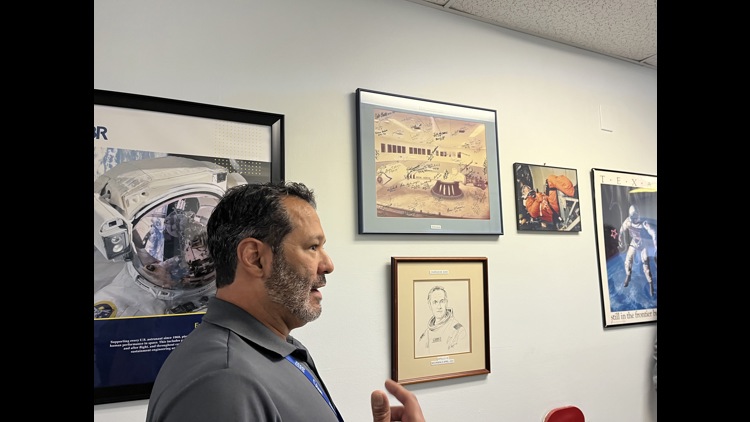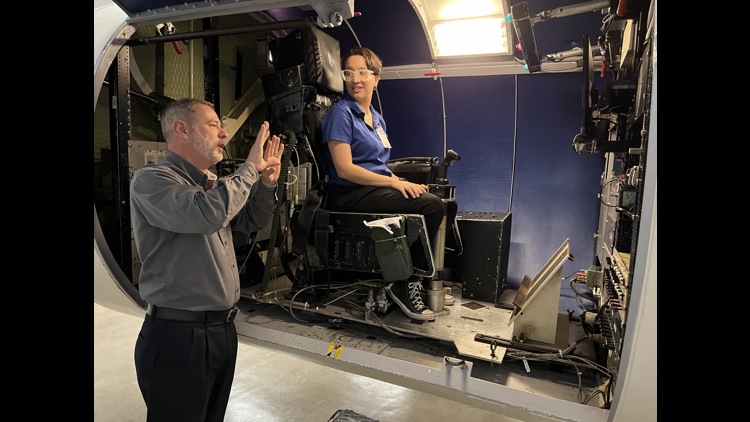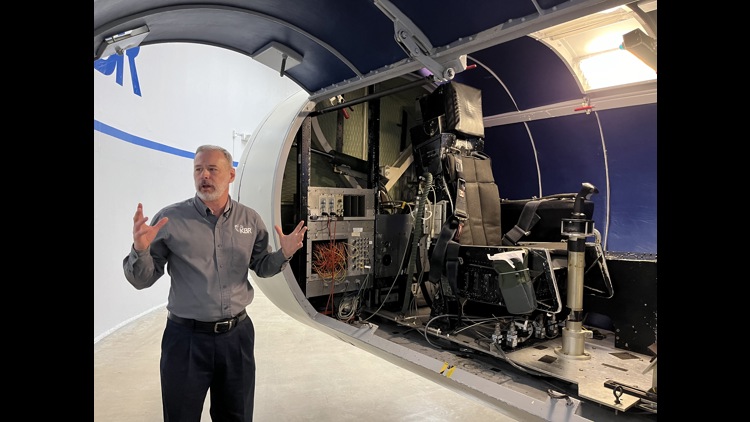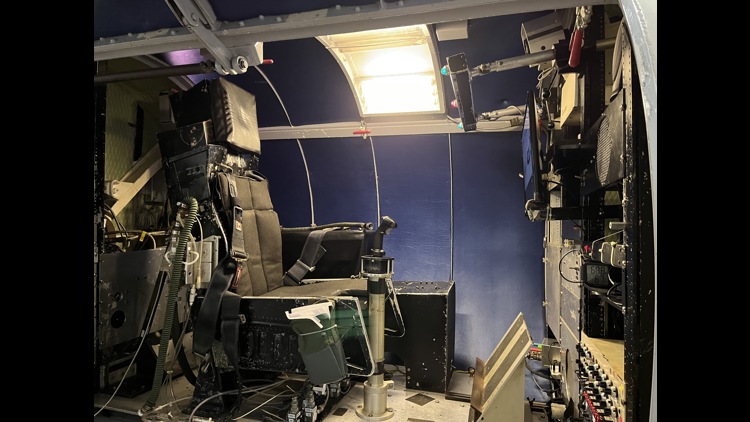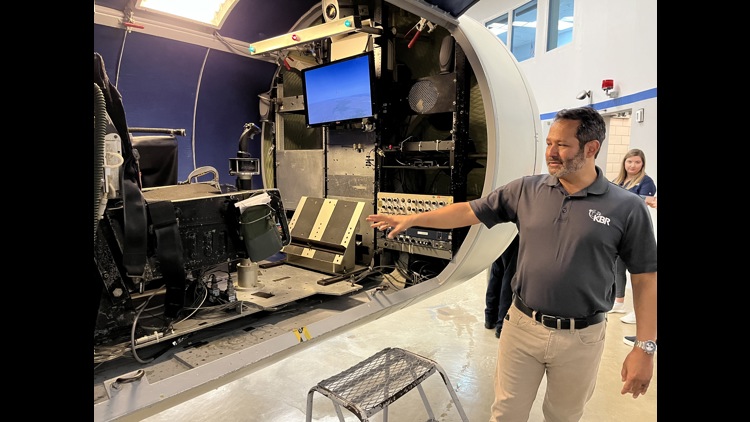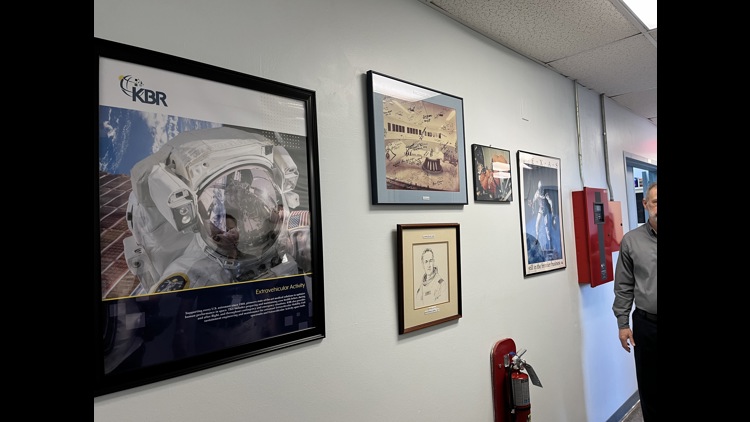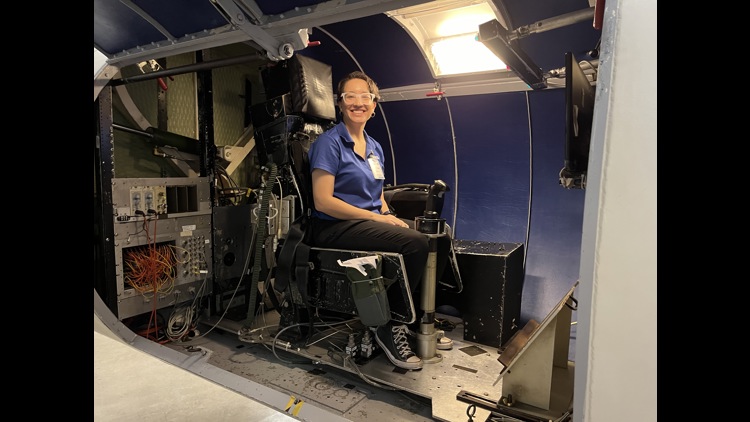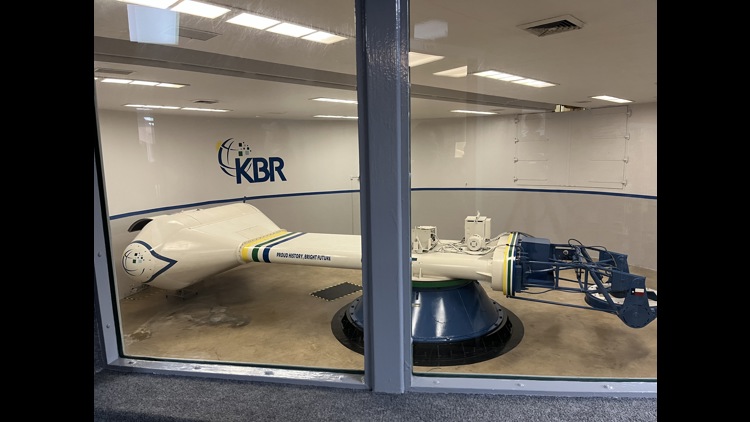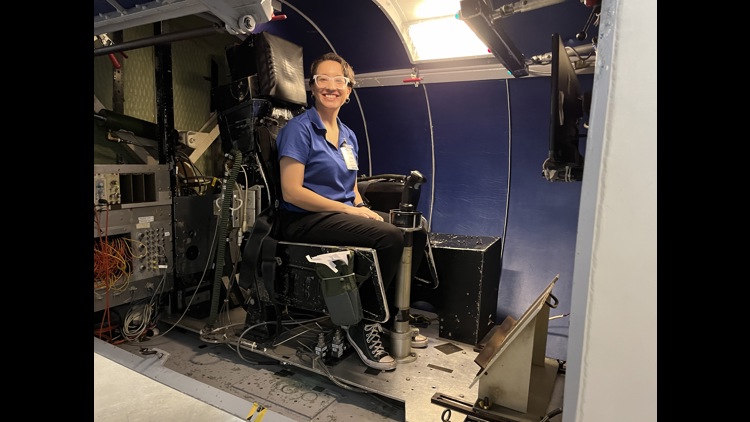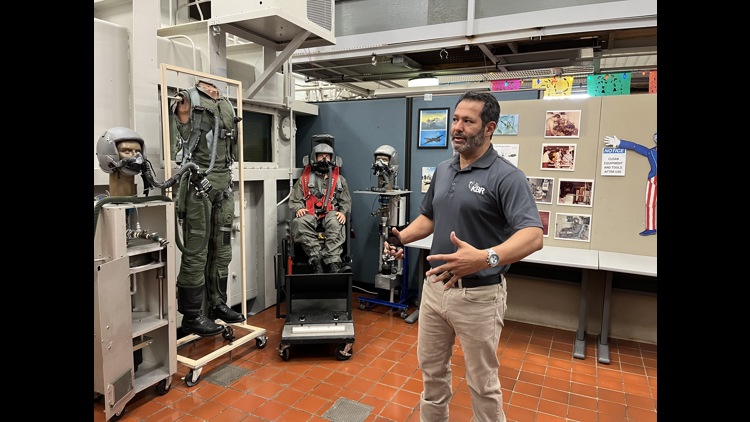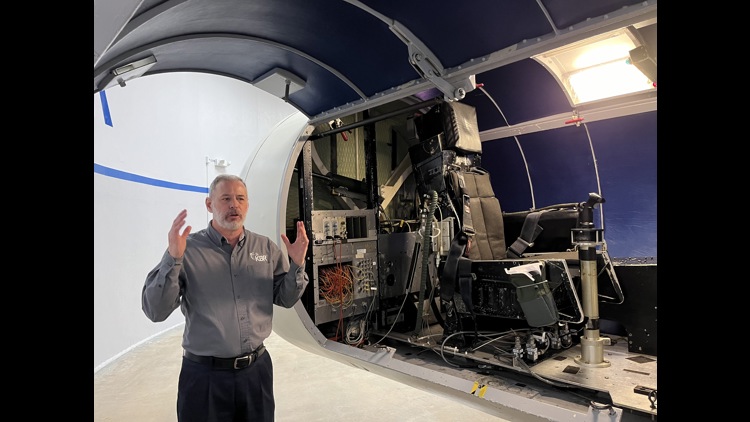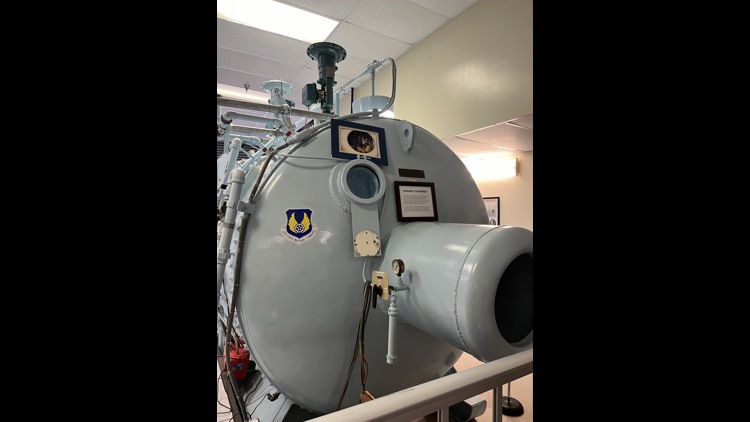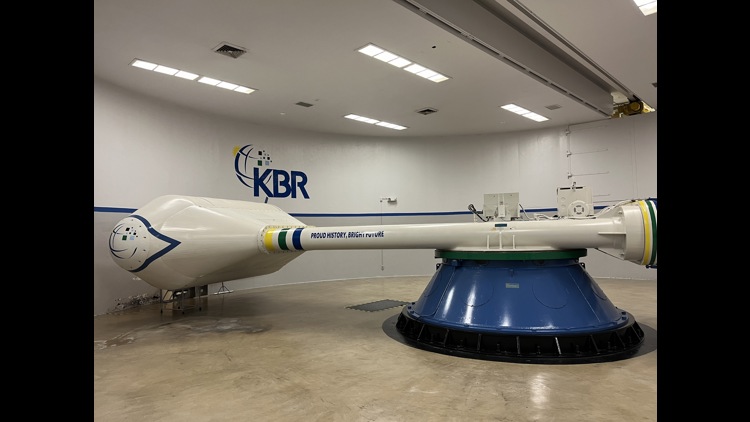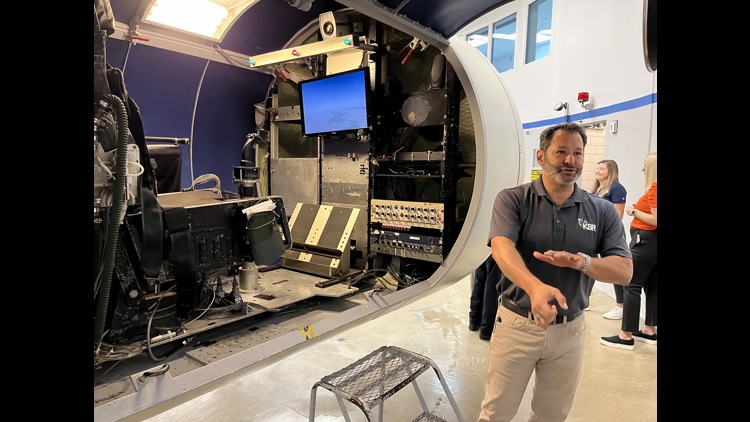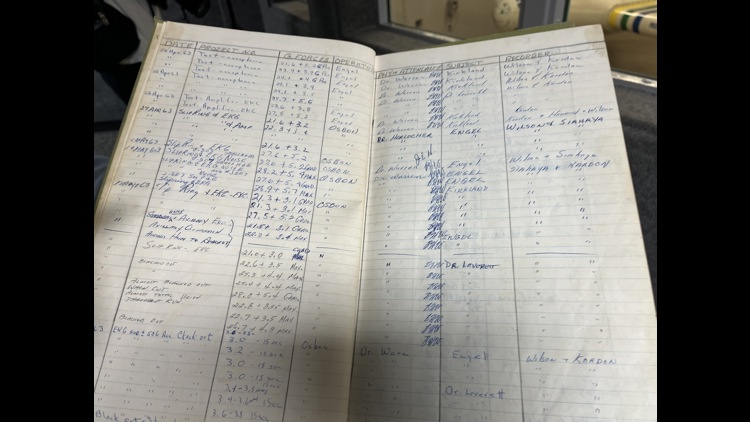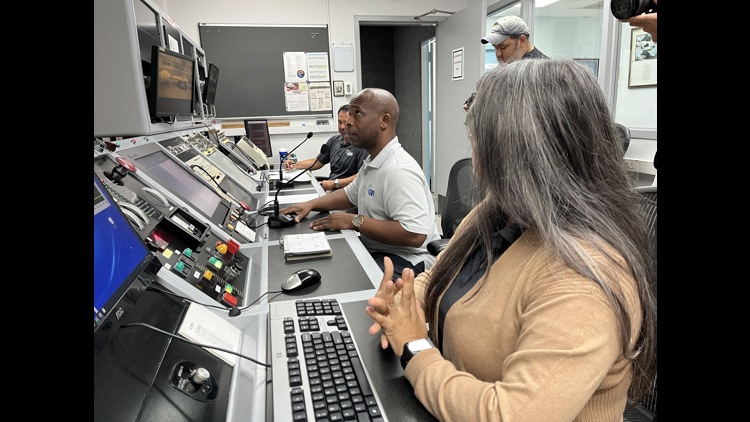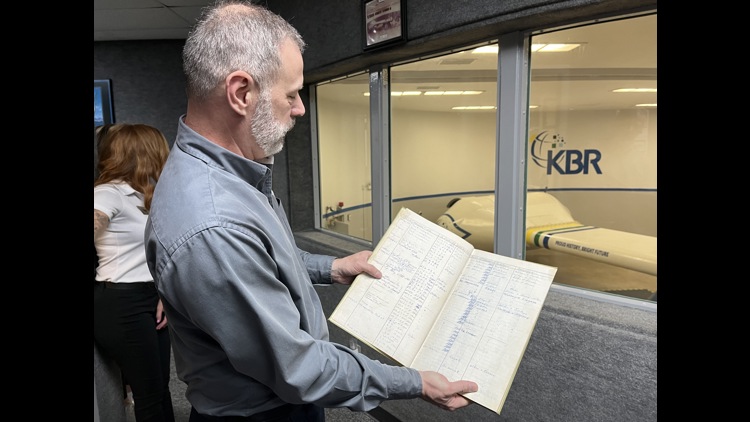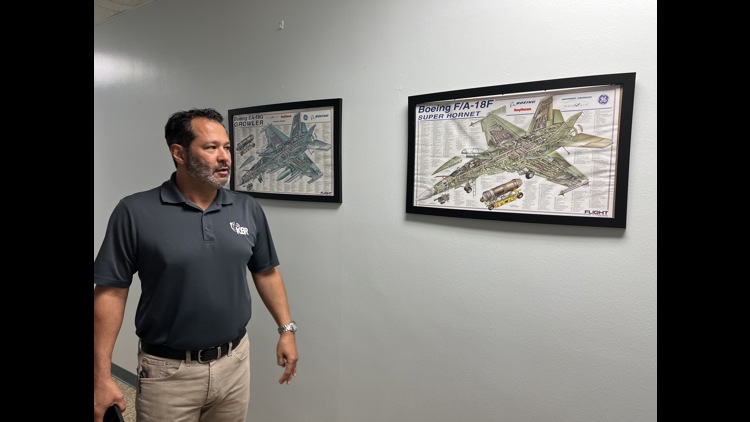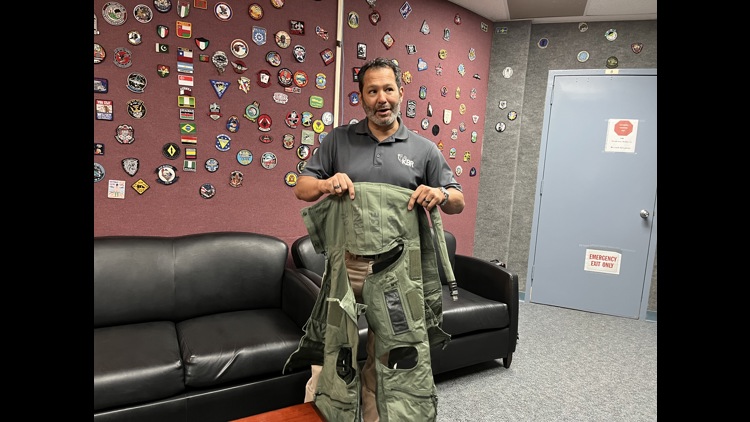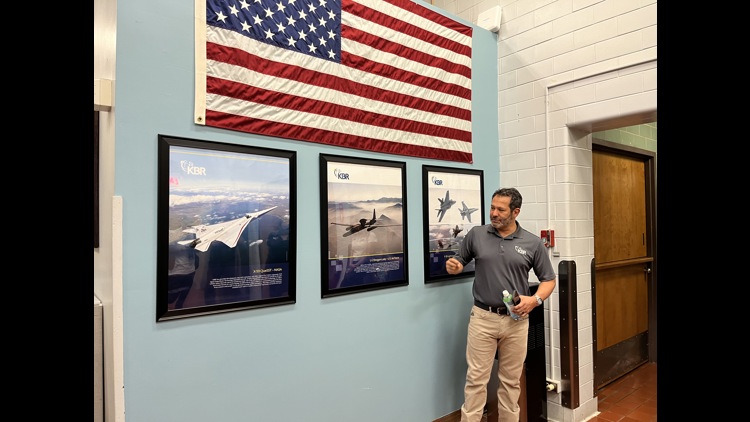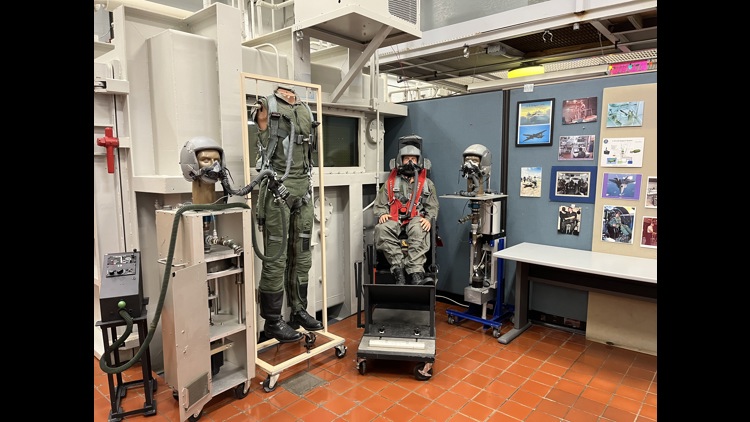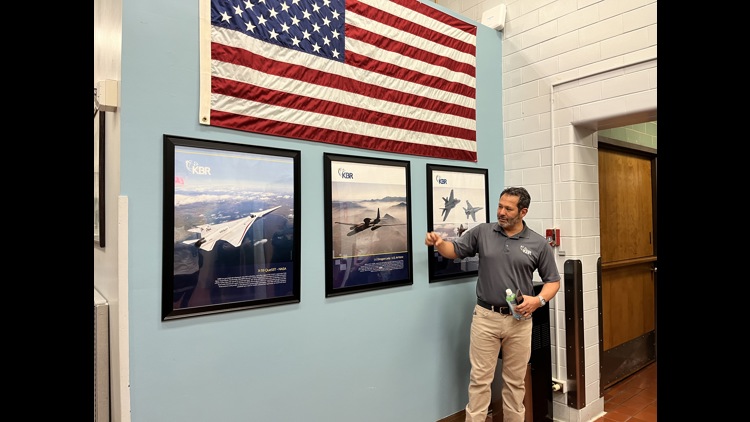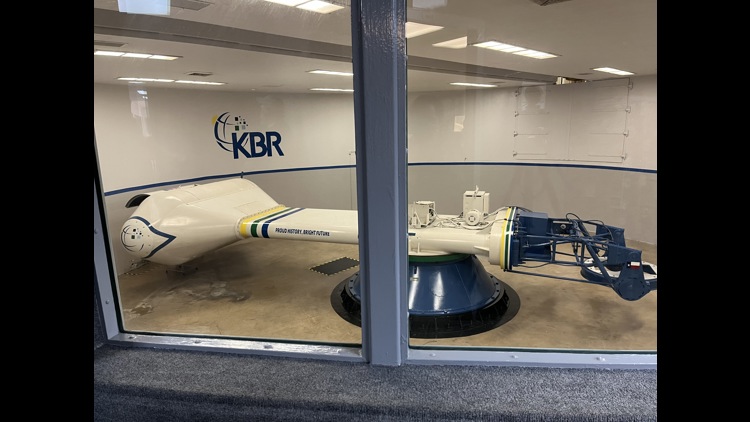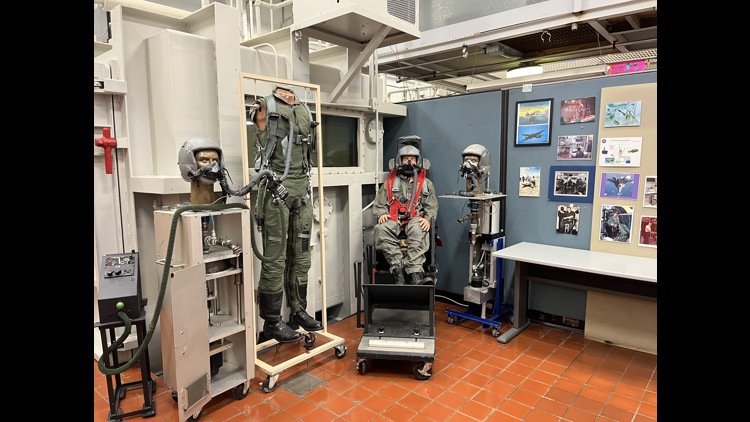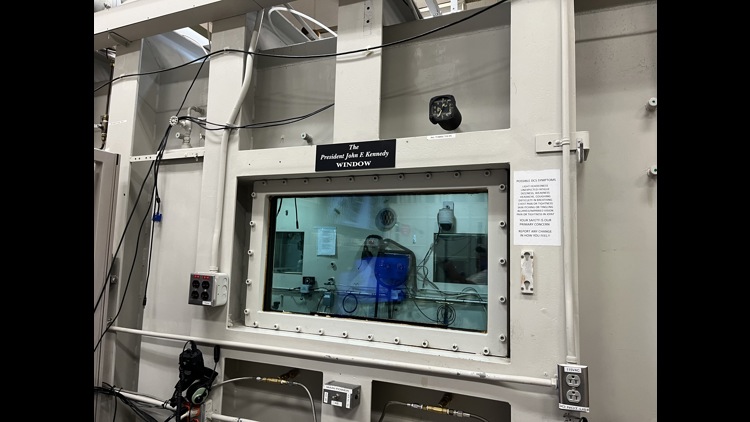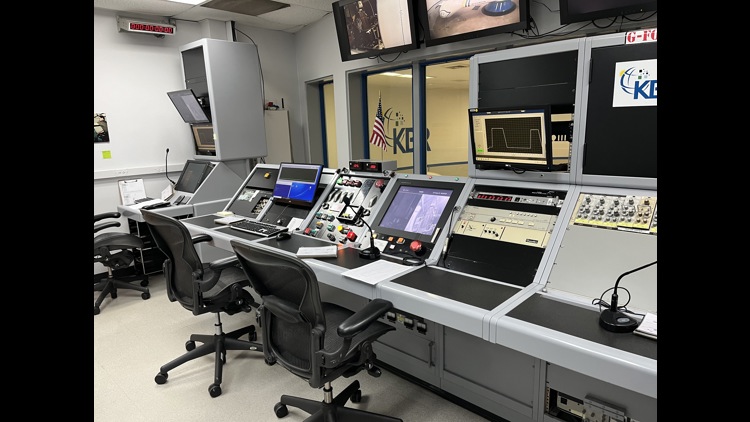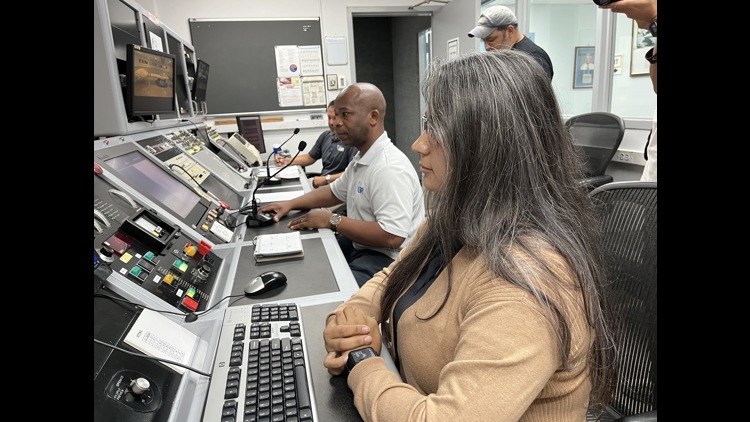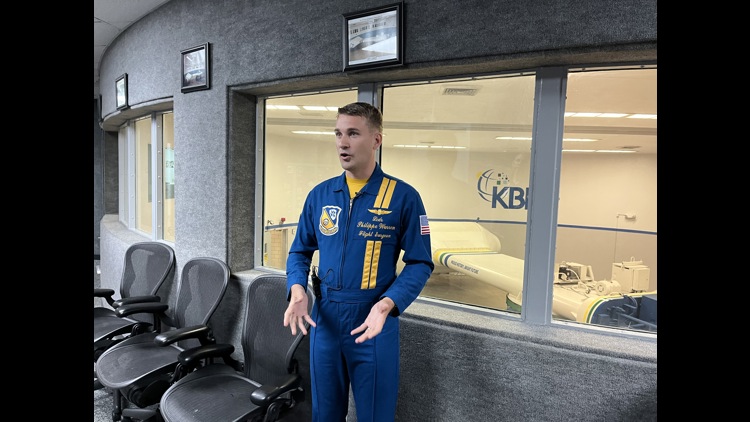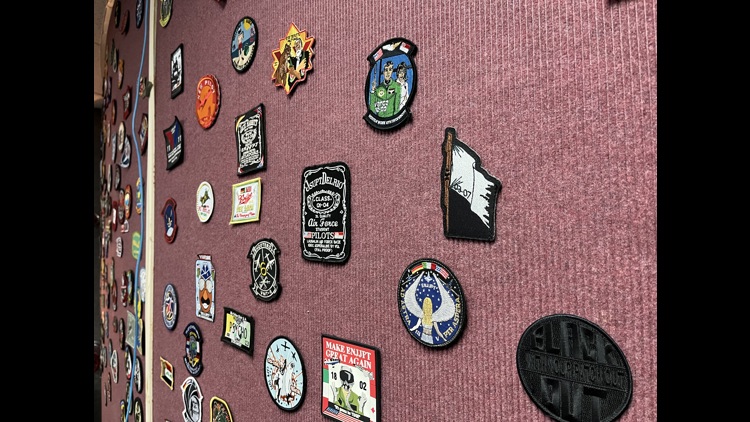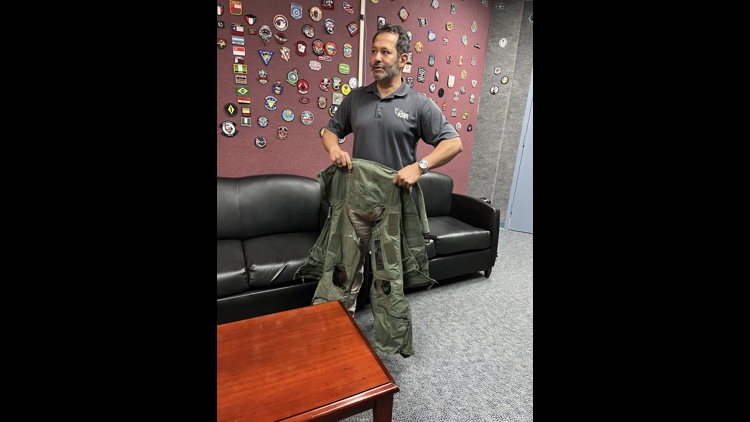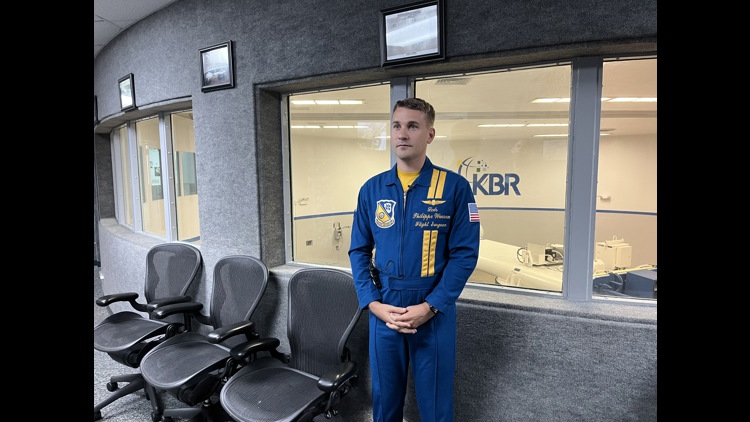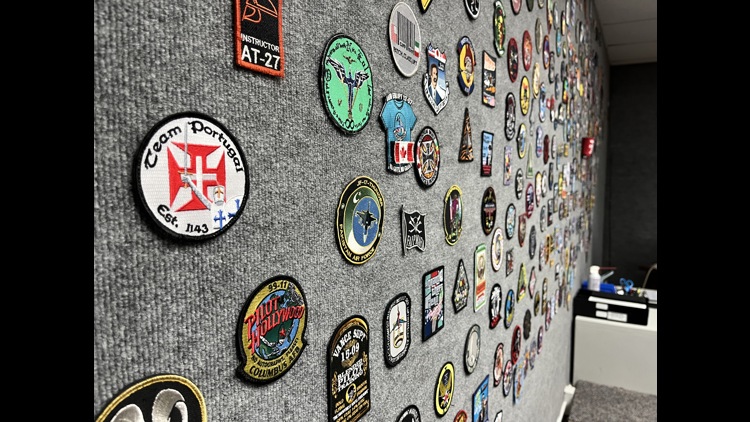SAN ANTONIO — A new class of Blue Angels kicked off their intensive training at a historic complex in San Antonio.
The latest crop of recruits, chosen in early July, gathered at the KBR Aerospace Environment Protection Lab at Brooks, formerly the Brooks Air Force Base, for their first event together.
Following a debrief, the recruits were sent to "the pit" where a 61-year-old centrifuge dwells. This centrifuge has adorned the moniker "the beast" by KBR employees.
Gabriel Gonzalez, a Centrifuge-based Flight Environment Training Instructor explained that "the beast” simulates high G-forces similar to what the recruits will experience up in the sky.
Gonzalez has helped train more than 16,000 United States Air Force, Navy and Marine Corps aviators and said the success is because of the skill and talent of the entire staff at KBR's lab.
"To me, it doesn’t feel like work. It’s about making them safe,” Gonzalez said.
High G-forces can cause all sorts of problems for the pilot and the Blue Angels don't wear G-suits during their shows which means they don't have an extra layer of protection, making it even more dangerous.
Jet pilots will typically experience 7-9 Gs while astronauts experience around 3Gs and up to 8Gs when conducting an emergency re-entry. Regular people can usually experience 2-5Gs without any major affects.
Lt. Commander Philippe Warren, Flight Surgeon for the Blue Angels said the team begins their training in the centrifuge in order to quickly expose the crew to one of the most dangerous and lethal threats they may face in the sky: G-LOC or loss of consciousness.
Warren said the training is rigorous and difficult but its extremely important for their safety.
"We know it works, it's proven to work," Warren said.
Daren Chauvin, Program Manger for KBR's lab explained that G-LOC is like a brain reboot for the brain - very different from falling asleep. He said each person that experiences G-LOC is different as some encounter tunnel vision, color loss, or periphery problems. G-LOC can be deadly for pilots going hundreds of miles per hour in a jet with other aviators in the sky.
"We do very risky work here but its necessary," Chauvin said.
Warren said the goal of the introductory training is to help these recruits refine their anti-G straining maneuver or techniques that will prevent pilots from a G-LOC while up in the sky.
"We want to make them prepared to be able to do preventative things to stop that from happening," Warren said.
While Warren is the current flight surgeon for the team he along with the other Blue Angels will be passing the torch starting November 3, once the new recruits takeover.
He said his first experience with the centrifuge two years ago was vital to his understanding of what his pilots go through almost daily.
“It was very educational for me. I learned a lot about what the pilot’s experience when they fly which allows me to provide my medical knowledge to them. I enjoyed it, it was hard but it was worthwhile," Warren said.
The Blue Angels each ride in an F-18 Super Hornet, the primary jet depicted in "Top Gun," but with some modifications.
The Blue Angels' jets are lighter because of the removal of weapons systems and their infamous blue paint also reduces friction making it more risky for the aviator.
During the Blue Angels shows Warren is the lead ground safety observer and diligently watches his crew in the sky for any discrepancies or problems. He will also give the pilots feedback about what they look like from the audiences point of view.
“The name of the game for me is making sure that our demonstrations are safe. And my goal finishing my two years on this team is that everybody who came into this show goes home to their family at the end of it," Warren said. Over the last two years Warren has been successful in that mission.
As he looks back on his time wearing the iconic blue jumpsuit, Warren said his favorite flight experience was actually his first in a Blue Angel jet, nearly two years ago.
“My very first time flying in the backseat of a Blue Angel I think is my favorite so far. It’s baby steps at the beginning and I was fortunate enough to fly in the backseat during that time period," Warren said.
Other than "the beast" KBR's laboratory also contains altitude chambers, commonly used for training deeper space pilots or astronauts, and hyperbaric chambers typically used for helping the body heal and fight infections.
The altitude chambers simulate the air pressure, temperature, and humidity of different altitudes. The specialized pilots going into higher altitudes are required to wear suits, similar to astronaut gear, in order to protect themselves from the altitude and temperatures.
One of the chambers is quite recognizable as the exact chamber President John F. Kennedy visited while touring the School of Aerospace Medicine at Brooks Air Force Base, just one day before his assassination.
The Panama Chamber - the oldest known dive chamber in the world that was used during the construction of the Panama Canal also resides in the laboratory.
Throughout the years the lab has seen several famous officials, astronauts and pilots pass through it's doors. The crew has also found historical artifacts in random places like a sign-in sheet that includes the signature of Dr. Leverett who created one of the first anti-G straining maneuvers. And the scissors Kennedy used for the ribbon cutting to inaugurate the School of Aerospace Medicine.
In addition to those historical moments, there's also a room decorated with it's own authentic mementos. Along the walls of the room are patches from students from all around the world who trained at the facility. Many patches have funny quotes, movie references or something on it that portrays the personality of each student.
Each year the Blue Angels perform in 32 different shows across the nation. They also do demonstrations in Canada every other year, and every decade they attend international tours.
For more on the Blue Angels, click here.

